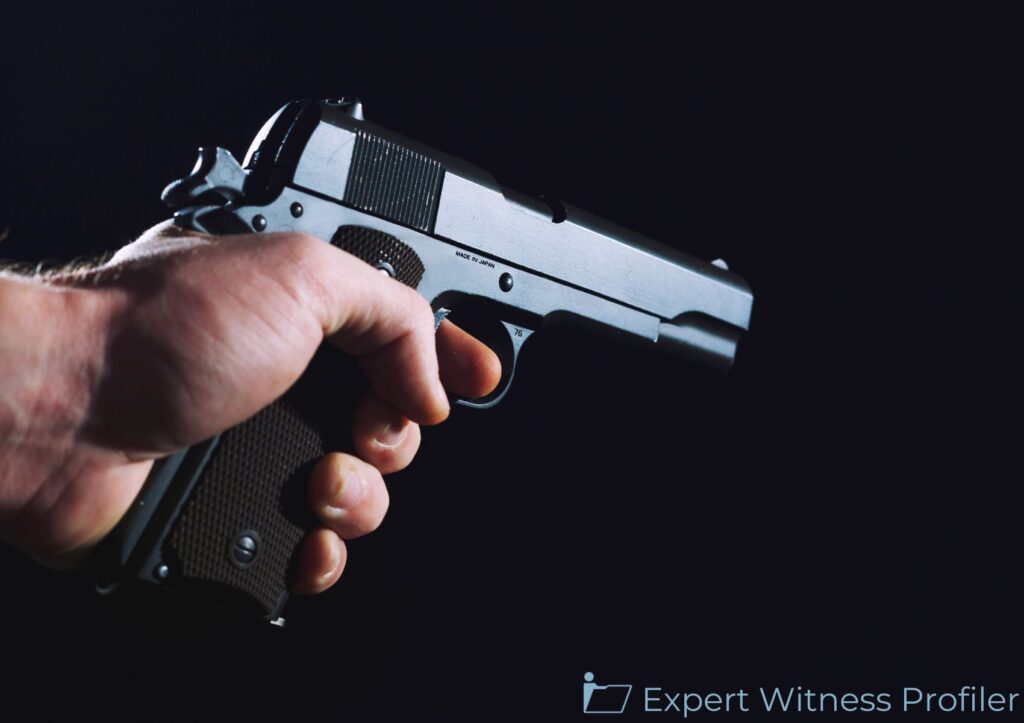Law Enforcement Expert Allowed to Opine on the Reactionary Gap
Posted on November 24, 2025 by Expert Witness Profiler
This suit involves the unnecessary use of excessive force by police officers against a black man suffering from a mental health crisis.
On November 21, 2021, during a mental health crisis, Jabari Asante-Chioke encountered Louisiana State Police (“LSP”) Officer Nicholas Dowdle and East Jefferson Levee District (“EJLD”) Officers Jonathon Downing and Gerard Duplessis (collectively referred to herein as “Officer Defendants”
Plaintiff, Malikah Asante-Chioke, individually, and on behalf of her father, Jabari Asante-Chioke, herein filed this action against the Defendants, accusing them of failure to use less-than-lethal methods in accordance with training and state and federal law, to subdue Mr. Asante-Chioke.
Malikah Asante-Chioke filed a motion to exclude the testimony of John J. Ryan.

Law Enforcement Expert Witness
John J. Ryan has been actively involved in police practices and law enforcement since 1981.
He was an active police officer for twenty years in Providence, Rhode Island. In the final year of his active career and since his retirement in June of 2002 from police services, he has been involved in police and law enforcement practices as a private consultant regarding law enforcement issues.
Discussion by the Court
I. Legal Conclusions
Plaintiff sought to exclude Ryan’s statement in his report which provides, “It is well known that [if] [sic] an officer reasonably perceives an immediate threat of serious bodily harm or death against themselves, another officer, or any third party, the officer may respond with deadly force.”
EJLD Defendants argued that a full reading of Ryan’s opinion will explain how this statement is based on Ryan’s “expertise in generally accepted [police] policies, practices, training, and industry standards.”
While that may be the case, the Court held that Ryan’s statement is not couched in the appropriate terms.
The Court will not exclude Ryan’s statements of applicable police standards and practices, nor his conclusion that Officers Downing and Duplessis complied with those standards. As the Court has explained, an expert may opine on whether officers complied with applicable police policies and procedures.
EJLD Defendants argued that Ryan did not need to discuss relevant East Jefferson Levee District policies and procedures and the Court agreed.
Lastly, Plaintiff argued that Ryan offered impermissible legal opinions because he opined that the EJLD Defendants acted reasonably. While reasonableness is an inadmissible legal conclusion, Plaintiff failed to offer specific examples from Ryan’s report where he opined on the reasonableness of the EJLD Defendants’ actions.
II. The “Reactionary Gap”
Plaintiff also argued that Ryan is unqualified to opine on the “reactionary gap” between when an officer receives a stimulus to stop or start firing and when an officer responds to said stimulus.
EJLD Defendants argued that Ryan is qualified to opine on reaction time because he has spent numerous hours training officers in shooting scenarios, including conducting stimulus drills on a shooting range. The Court agreed with EJLD Defendants.
Plaintiff also argued that, even if Ryan were qualified, his opinions on the reactionary gap will not help the factfinder because perception reaction times are common sense. However, the Court disagreed. In this case, Ryan may help the factfinder determine whether the Defendants officers’ actions to continue shooting Asante-Chioke were reasonable. Consequently, the Court refused to exclude Ryan’s testimony as unhelpful.
III. Ryan’s Factual Interpretations
Plaintiff also argued that the Court should exclude “Ryan’s opinions that merely recite defense counsel’s factual and legal narratives.”
EJLD Defendants argued that Ryan’s opinions are not based on defense counsel’s factual and legal narratives, but instead are based on his view of the body cam, dash cam, and bystander video evidence. This Court agreed with EJLD Defendants. Throughout his report, Ryan utilized the available video evidence and deposition testimony to formulate his opinions.
Held
The Court granted in part and denied in part Malikah Asante-Chioke’s motion to exclude the testimony of John J. Ryan.
Key Takeaway:
While a lay person may have a general understanding of perception reaction times, “a lay person typically would not have experience or knowledge about the time it takes an officer to react to a perceived threat or the absence of a perceived threat.”
By opining that shooting officers take time to react to a stimulus to stop shooting, Ryan may help the factfinder determine whether the Defendants officers’ actions to continue shooting Asante-Chioke were reasonable.
Please refer to the blog previously published about this case:
Biomechanics Expert Was Allowed to Opine on the Source of Bullet Wounds
Case Details:
| Case Caption: | Asante-Chioke V. Dowdle Et Al |
| Docket Number: | 2:22cv4587 |
| Court Name: | United States District Court, Louisiana Eastern |
| Order Date: | November 21, 2025 |





